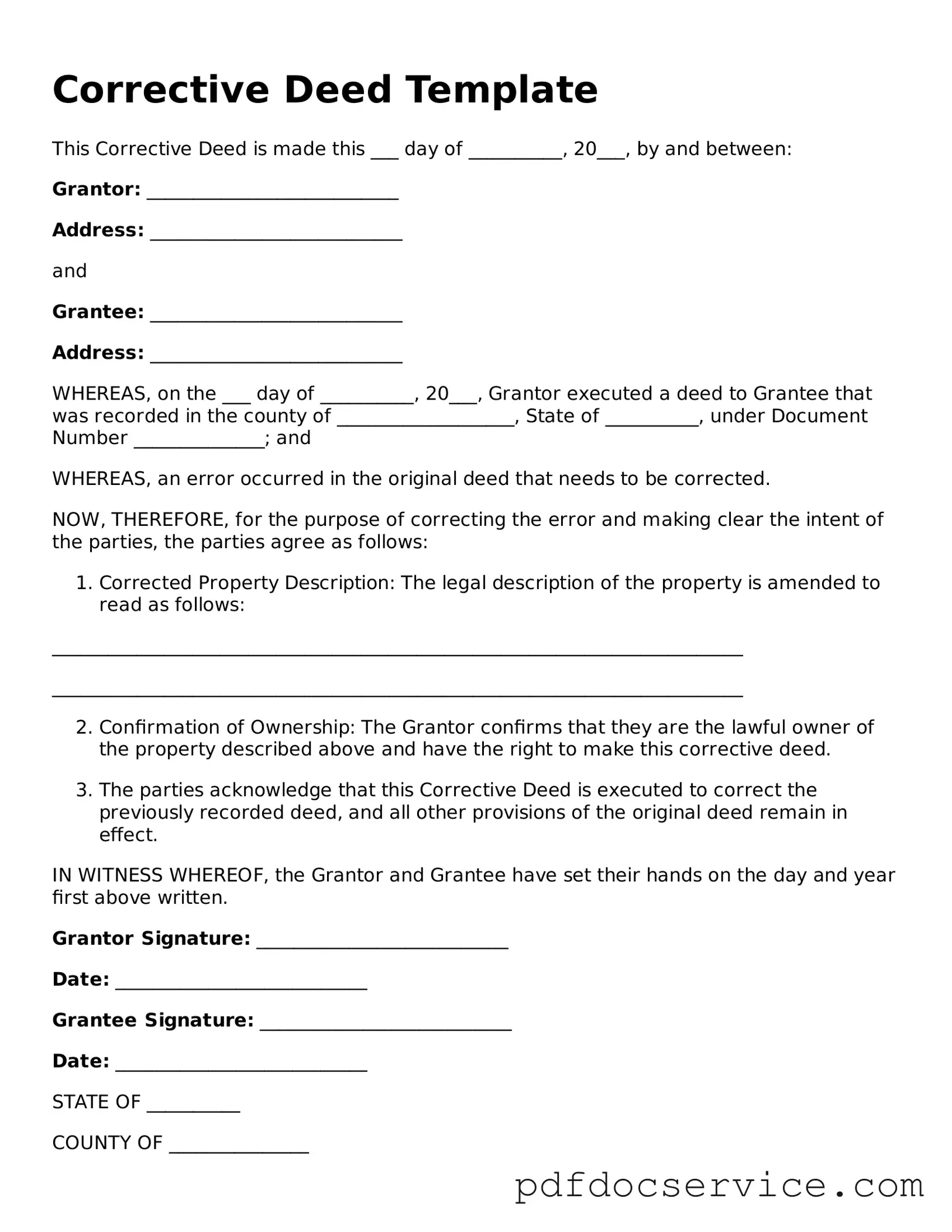Blank Corrective Deed Form
A Corrective Deed is a legal document used to correct errors or omissions in a previously executed deed. This form ensures that the intent of the parties involved is accurately reflected in the property records. By addressing discrepancies, a Corrective Deed helps to maintain clarity and prevent future disputes regarding property ownership.
Open Corrective Deed Editor
